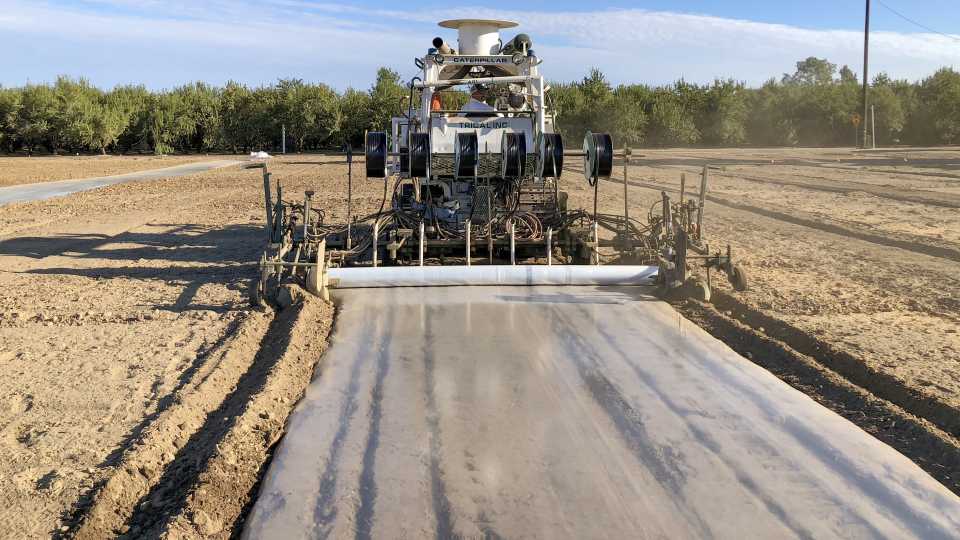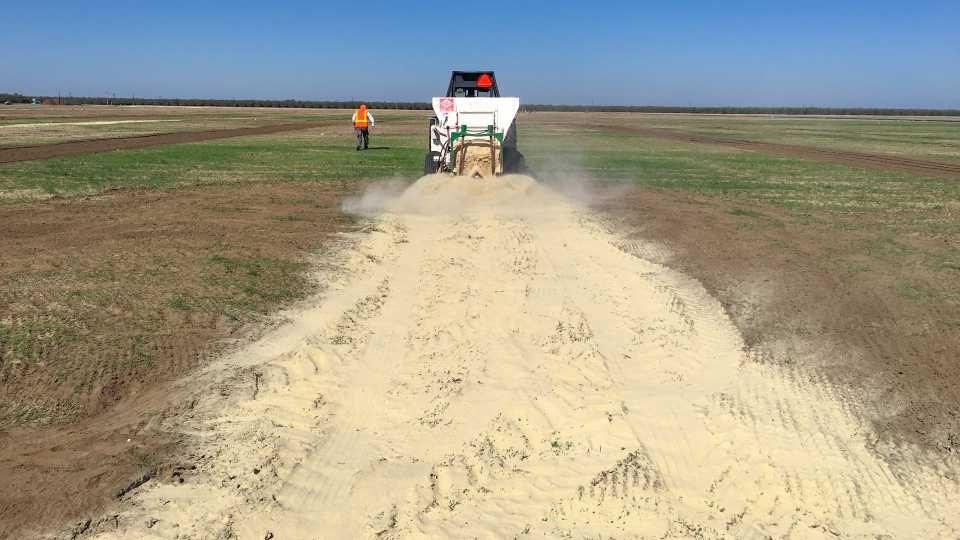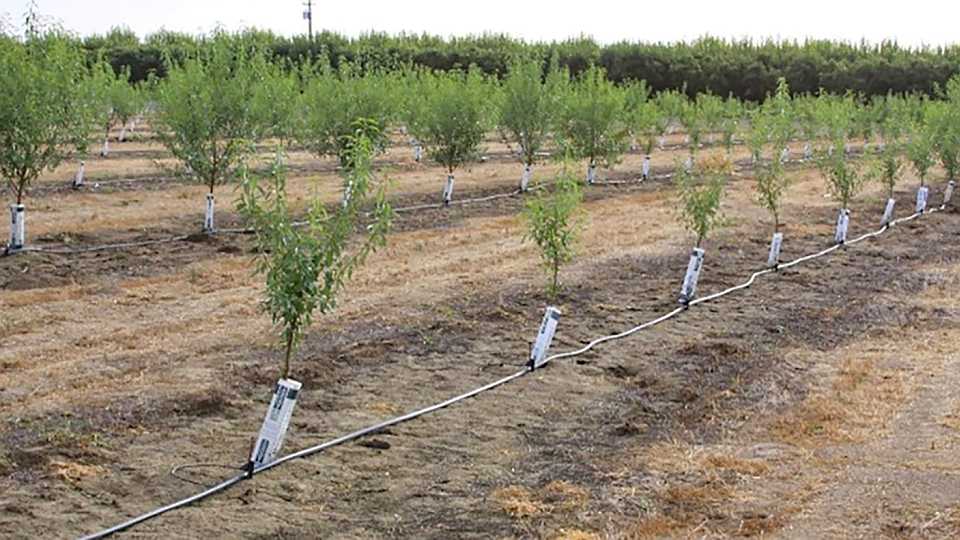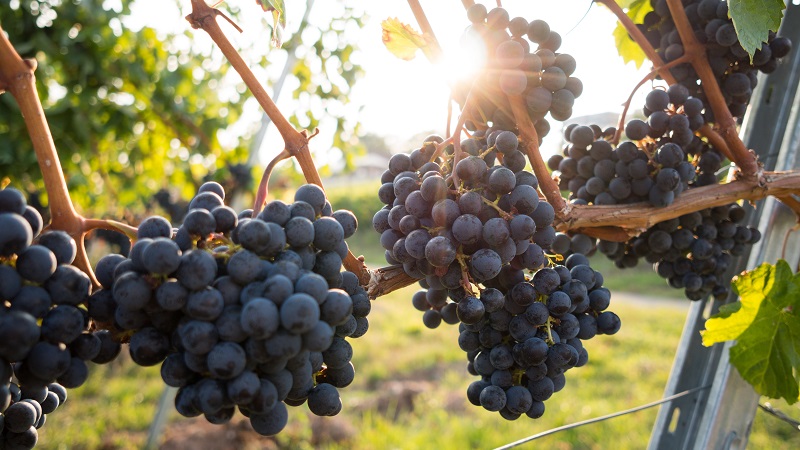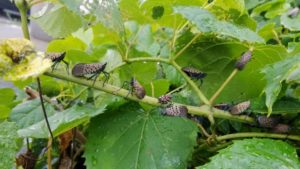A Soil Fumigation Alternative for Almond Growers
An almond grower or stone fruit grower can go through the trouble of removing an old orchard and replanting new trees only to find out the young orchard is getting off to a slow, straggling start, potentially reducing valuable yield potential in the first few years of production.
In many cases the culprit is Prunus replant disease (PRD). Soil fumigation has been an effective prevention practice for PRD and other biological replant problems, but environmental concerns are driving alternative methods.
Greg Browne, a Research Plant Pathologist for the USDA-ARS and a member of the University of California (UC), Davis Department of Plant Pathology, has been studying soil-borne problems for fruit and nut trees since the mid-’90s. He has a special appreciation for the challenges of orchard replant problems and managing them with alternatives to soil fumigation.
The Replant Problem Complex
“PRD is only one of several types [of] replant problems that growers should consider when replacing almond or other stone fruit orchards,” Browne says.
PRD is not well understood, but evidence suggests it is mediated, at least in part, by soil microbial community members that shift or build over time in almond or stone fruit soils, influencing nutrient availability and interacting with young roots. PRD causes most of its growth suppression in the first few years after planting. Thereafter, trees usually recover strength but not without some significant loss of yield in early years. PRD tends to be somewhat specific, suppressing successive plantings of Prunus species (i.e., almond or other stone fruits) but not Prunus planted after citrus or grape, for example.
In contrast, another key replant problem, phytopathogenic nematodes, tends to be less host specific. Some species of nematodes that damage grape roots also can damage roots of Prunus. Also, in comparison to PRD, nematodes can take longer to build after replanting an orchard. But once established, they have potential to suppress an orchard for the rest of its economic life if soil, rootstock, and management factors permit. There can be many additional replant problems, including Phytophthora crown and root rot, nutritional deficiencies and toxicities, gophers, herbicide residues, insects, etc.
Managing PRD Without Soil Fumigation
Until rootstocks are developed to resist or tolerate replant problems, Browne feels that the most promising alternative to preplant soil fumigation may be anaerobic soil disinfestation (ASD). In its complete form, it amends soil with a readily available carbon substrate, such as rice bran, covers it with clear tarp, and heavily irrigates the soil profile with drip tubing placed underneath. The moisture level of the treated soil is kept at or above field capacity for three to six weeks, while the clear tarp keeps the soil warm and sealed off from fresh air. Under these conditions, microbes in the soil use the carbon, quickly generating anaerobic conditions, organic acids, and volatile molecules that can accumulate under the tarp and kill or suppress plant pathogens.
Strawberry growers were among the first to use ASD in California, and Browne and his team subsequently tried it to manage PRD in almond at a San Joaquin Valley site impacted by PRD but not nematodes. In repeated almond replant trials, ASD—based on rice bran with auxiliary drip irrigation under a clear tarp—was highly effective and matched the benefit of optimal preplant soil fumigation with 1,3-D plus chloropicrin.
However, cost and logistical complications were the drawbacks of ASD treatments tested for PRD. For example, the cost of ASD based on tarp and rice bran with an auxiliary drip system is roughly twice that of effective preplant soil fumigation. Key logistical complications of ASD include timing and scheduling. ASD is best conducted during the heat of mid to late summer, which means that a year out of production will definitely be required for almonds replanted after almonds. Also, some engineering is involved in setting up the auxiliary irrigation system for ASD; it needs to fit with soil texture and irrigation water supply options.
Considerations, Future Research, and Advice
With additional help from the Almond Board of California and California Department of Pesticide Regulation, Browne and others have since been conducting trials to optimize ASD and make it more affordable for replanting almond orchards.
Currently, growers who are unable to fumigate a portion of their land may want to give ASD a try. Browne encourages any interested growers to contact their UC Cooperative Extension Farm Advisor and him for more information.
“What’s positive is that there are quite a few of us working together on ASD research,” he says. “We’ll do our best to help growers who want to give it a try.”





